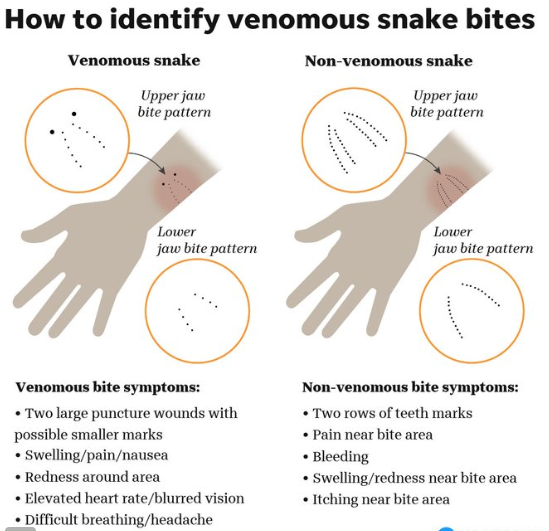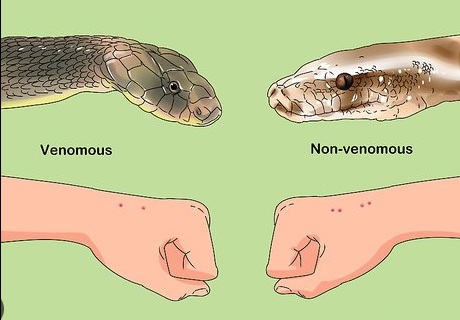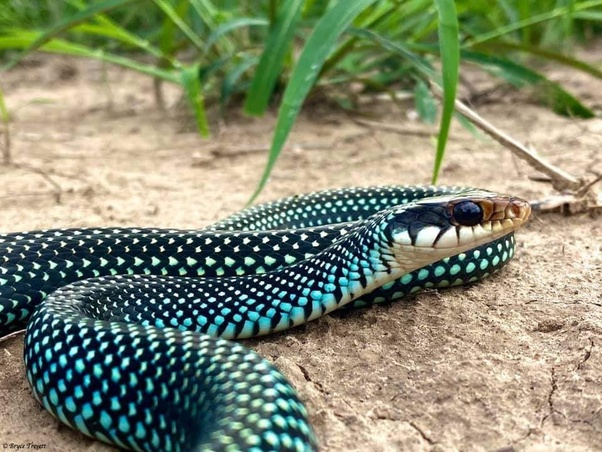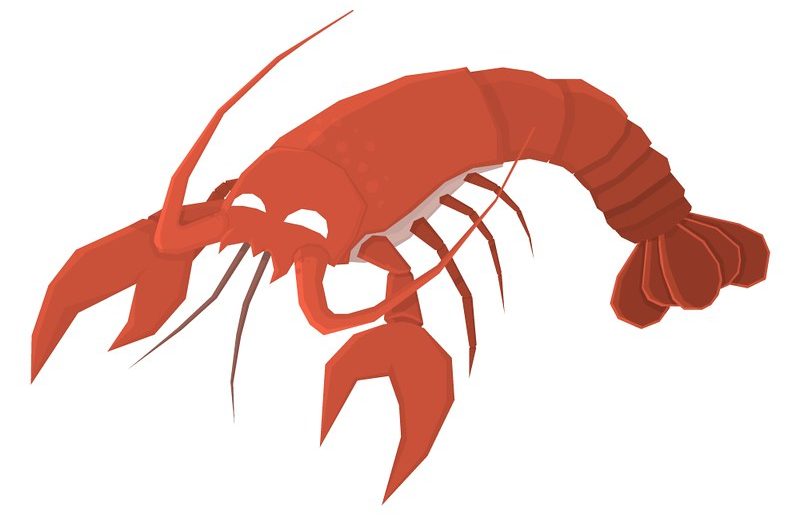
How to Identify Snake Bite by Just Seeking Bitten Marks
Snake bites can be a serious medical emergency, and it is important to identify the type of snake involved in order to provide appropriate treatment. While seeking bitten marks alone may not be enough to definitively determine the snake species, there are certain local features that can give clues about the nature of the bite.
Fang Marks: One of the most significant indicators of a poisonous snake bite is the presence of two puncture wounds. These fang marks are typically seen in cases of venomous snake bites. In contrast, non-venomous snakebites may result in small puncture wounds arranged in an arc.
Pain: After a snake bite, various types of pain may develop. This can include burning, bursting, or throbbing pain, which may occur immediately after the bite and spread up the bitten limb. Additionally, lymph nodes in the affected area may become painful. It is worth noting that bites from certain snakes, such as kraits and sea snakes, can be virtually painless.
Local Swelling: The intensity of local swelling can also provide valuable information. Viper bites, for example, tend to produce a more pronounced local reaction compared to other snakes. Swelling may become apparent within 15 minutes and can become massive within 2-3 days. In some cases, the swelling may persist for up to 3 weeks. It is important to note that if there is no swelling 2 hours after a viper bite, it is generally safe to assume that there has been no venom injection.

Local Necrosis: In certain snake bites, such as those from Asian pit vipers and some rattlesnakes, bruising, blistering, and necrosis can develop over a few days following the bite. This is particularly marked in Asian pit viper bites. Bites from Asian cobras may also cause tender local swelling and blistering. On the other hand, krait bites usually do not result in any significant local reaction. In some cases, when individuals are spat at by spitting elapids, venom ophthalmia, or eye irritation, may occur.
Secondary Infection: Snake bites can lead to secondary infection due to the bacterial flora present in the oral cavity of snakes. This can contribute to additional complications and should be monitored and treated accordingly.
It is important to note that while these local features can provide some initial insights, they are not sufficient to definitively identify the snake species or determine the presence of venom. Proper diagnosis and treatment should be sought from medical professionals who can conduct further assessments and provide appropriate care.










